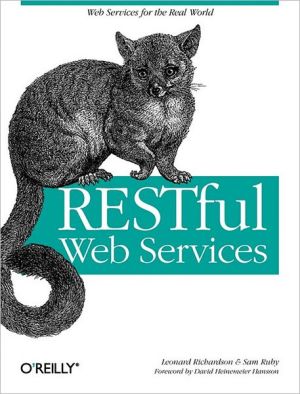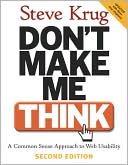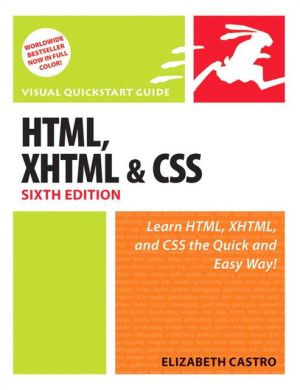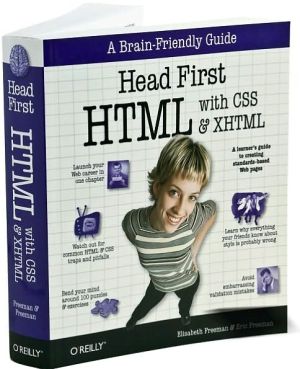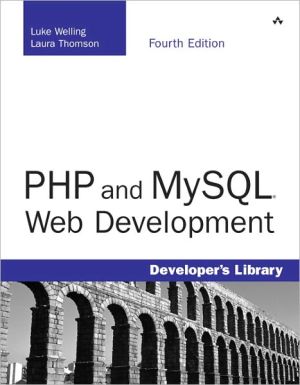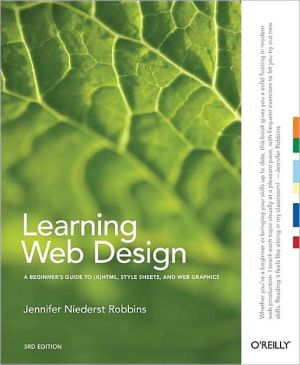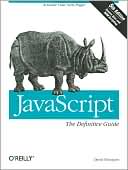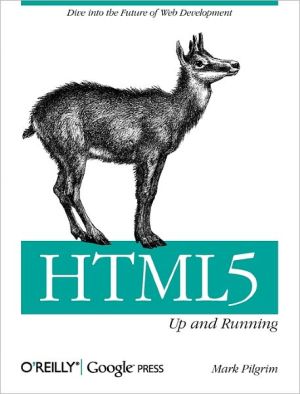RESTful Web Services: Web Services for the Real World
"Every developer working with the Web needs to read this book." — David Heinemeier Hansson, creator of the Rails framework\ "RESTful Web Services finally provides a practical roadmap for constructing services that embrace the Web, instead of trying to route around it." — Adam Trachtenberg, PHP author and EBay Web Services Evangelist\ You've built web sites that can be used by humans. But can you also build web sites that are usable by machines? That's where the future lies, and that's what...
Search in google:
This easy-to-understand reference shows how to use the Representational StateTransfer Web architecture, or REST, to provide services over the Web that arefundamentally simple, both for producers and the consumers.
Foreword; Preface; The Web Is Simple; Big Web Services Are Not Simple; The Story of the REST; Reuniting the Webs; What’s in This Book?; Administrative Notes; Conventions Used in This Book; Using Code Examples; Safari® Enabled; How to Contact Us; Acknowledgments; Chapter 1: The Programmable Web and Its Inhabitants; 1.1 Kinds of Things on the Programmable Web; 1.2 HTTP: Documents in Envelopes; 1.3 Method Information; 1.4 Scoping Information; 1.5 The Competing Architectures; 1.6 Technologies on the Programmable Web; 1.7 Leftover Terminology; Chapter 2: Writing Web Service Clients; 2.1 Web Services Are Web Sites; 2.2 del.icio.us: The Sample Application; 2.3 Making the Request: HTTP Libraries; 2.4 Processing the Response: XML Parsers; 2.5 JSON Parsers: Handling Serialized Data; 2.6 Clients Made Easy with WADL; Chapter 3: What Makes RESTful Services Different?; 3.1 Introducing the Simple Storage Service; 3.2 Object-Oriented Design of S3; 3.3 Resources; 3.4 HTTP Response Codes; 3.5 An S3 Client; 3.6 Request Signing and Access Control; 3.7 Using the S3 Client Library; 3.8 Clients Made Transparent with ActiveResource; 3.9 Parting Words; Chapter 4: The Resource-Oriented Architecture; 4.1 Resource-Oriented What Now?; 4.2 What’s a Resource?; 4.3 URIs; 4.4 Addressability; 4.5 Statelessness; 4.6 Representations; 4.7 Links and Connectedness; 4.8 The Uniform Interface; 4.9 That’s It!; Chapter 5: Designing Read-Only Resource-Oriented Services; 5.1 Resource Design; 5.2 Turning Requirements Into Read-Only Resources; 5.3 Figure Out the Data Set; 5.4 Split the Data Set into Resources; 5.5 Name the Resources; 5.6 Design Your Representations; 5.7 Link the Resources to Each Other; 5.8 The HTTP Response; 5.9 Conclusion; Chapter 6: Designing Read/Write Resource-Oriented Services; 6.1 User Accounts as Resources; 6.2 Custom Places; 6.3 A Look Back at the Map Service; Chapter 7: A Service Implementation; 7.1 A Social Bookmarking Web Service; 7.2 Figuring Out the Data Set; 7.3 Resource Design; 7.4 Design the Representation(s) Accepted from the Client; 7.5 Design the Representation(s) Served to the Client; 7.6 Connect Resources to Each Other; 7.7 What’s Supposed to Happen?; 7.8 What Might Go Wrong?; 7.9 Controller Code; 7.10 Model Code; 7.11 What Does the Client Need to Know?; Chapter 8: REST and ROA Best Practices; 8.1 Resource-Oriented Basics; 8.2 The Generic ROA Procedure; 8.3 Addressability; 8.4 State and Statelessness; 8.5 Connectedness; 8.6 The Uniform Interface; 8.7 This Stuff Matters; 8.8 Resource Design; 8.9 URI Design; 8.10 Outgoing Representations; 8.11 Incoming Representations; 8.12 Service Versioning; 8.13 Permanent URIs Versus Readable URIs; 8.14 Standard Features of HTTP; 8.15 Faking PUT and DELETE; 8.16 The Trouble with Cookies; 8.17 Why Should a User Trust the HTTP Client?; Chapter 9: The Building Blocks of Services; 9.1 Representation Formats; 9.2 Prepackaged Control Flows; 9.3 Hypermedia Technologies; Chapter 10: The Resource-Oriented Architecture Versus Big Web Services; 10.1 What Problems Are Big Web Services Trying to Solve?; 10.2 SOAP; 10.3 WSDL; 10.4 UDDI; 10.5 Security; 10.6 Reliable Messaging; 10.7 Transactions; 10.8 BPEL, ESB, and SOA; 10.9 Conclusion; Chapter 11: Ajax Applications as REST Clients; 11.1 From AJAX to Ajax; 11.2 The Ajax Architecture; 11.3 A del.icio.us Example; 11.4 The Advantages of Ajax; 11.5 The Disadvantages of Ajax; 11.6 REST Goes Better; 11.7 Making the Request; 11.8 Handling the Response; 11.9 JSON; 11.10 Don’t Bogart the Benefits of REST; 11.11 Cross-Browser Issues and Ajax Libraries; 11.12 Subverting the Browser Security Model; Chapter 12: Frameworks for RESTful Services; 12.1 Ruby on Rails; 12.2 Restlet; 12.3 Django; Some Resources for REST and Some RESTful Resources; Standards and Guides; Services You Can Use; The HTTP Response Code Top 42; Three to Seven Status Codes: The Bare Minimum; 1xx: Meta; 2xx: Success; 3xx: Redirection; 4xx: Client-Side Error; 5xx: Server-Side Error; The HTTP Header Top Infinity; Standard Headers; Nonstandard Headers; Colophon;Leonard Richardson (http://www.crummy.com/) is the author of the Ruby Cookbook (O'Reilly) and of several open source libraries, including Beautiful Soup. A California native, he currently lives in New York.Sam Ruby is a prominent software developer who has made significant contributions to the many of the Apache Software Foundation's open source projects, and to the standardization of web feeds via his involvement with the Atom web feed standard and the popular Feed Validator web service.He currently holds a Senior Technical Staff Member position in the Emerging Technologies Group of IBM. He resides in Raleigh, North Carolina.
